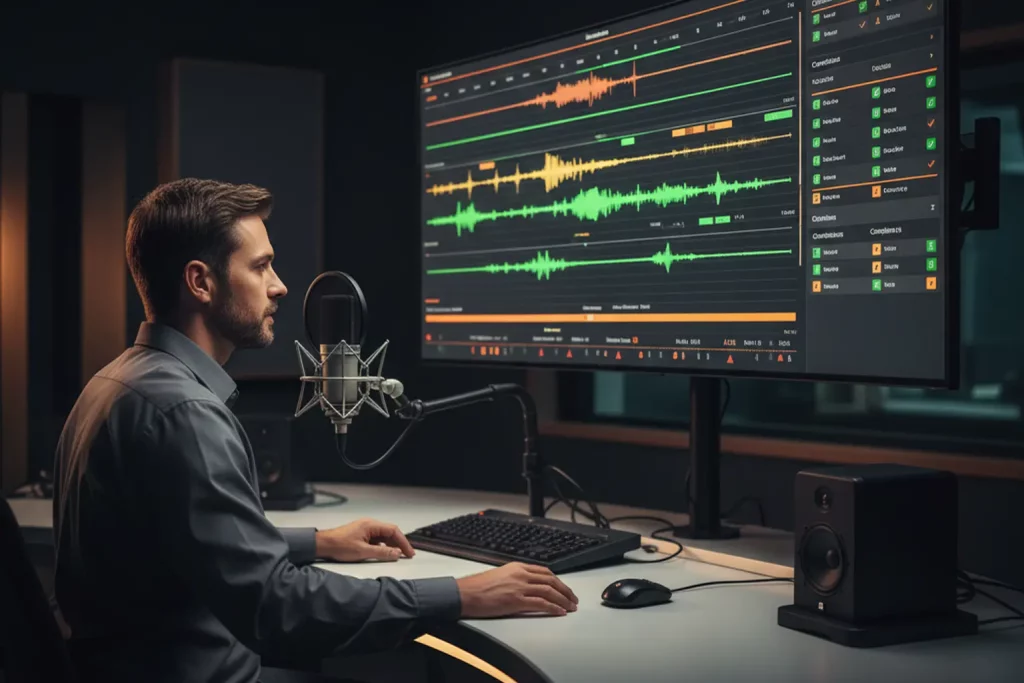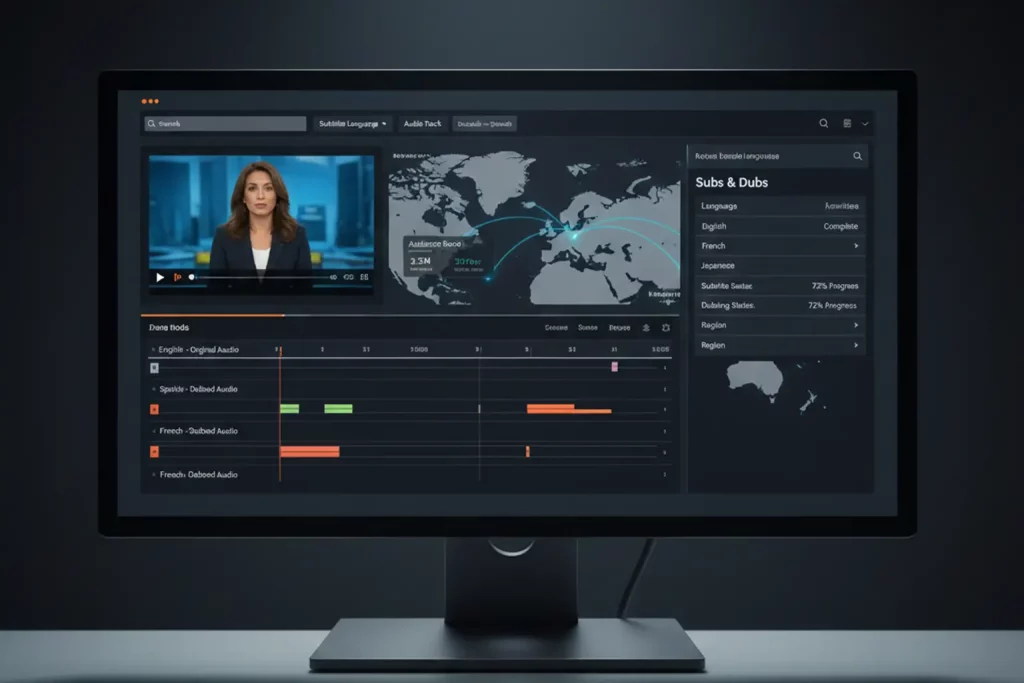AI metadata tagging sits at the center of modern media management. The practice attaches rich, machine‑readable descriptors to every frame, file, and clip, turning vast archives into assets you can find and monetize in seconds. This guide dives deep into the techniques, tools, and real‑world wins that make AI‑driven tagging a must for broadcasters, streamers, and content owners.
Introduction to AI Metadata Tagging
Every media library grows by the hour. Without precise tags, valuable footage hides in plain sight. AI metadata tagging uses natural language processing, computer vision, and machine learning to generate consistent descriptors faster than any manual team. The result: lightning‑quick search, smoother collaboration, and new revenue paths.
Understanding Metadata and Its Importance
Metadata is data about data. It answers who, what, where, when, and why for every asset. Good metadata reduces hunt time, preserves rights info, and fuels recommendation engines. Poor metadata drains budgets through duplicated work and missed licensing deals.
Evolution from Manual to AI‑Driven Tagging
Manual logging once meant hours of note‑taking. Early rule‑based systems added speed but little nuance. Today, AI models learn from context, detect faces, transcribe speech, and label scenes at scale. Organizations now combine algorithms with expert review to reach broadcast‑grade accuracy.
Our Services at Digital Nirvana
Digital Nirvana delivers AI metadata tagging through MetadataIQ and complements it with monitoring via MonitorIQ and transcription through TranceIQ. Our cloud‑native tools plug into Avid, Adobe, and leading MAM systems, giving you turnkey tagging with broadcast‑grade accuracy. Schedule a quick demo to see how we reduce logging hours and accelerate content to market.
Types of Metadata in Digital Asset Management
Inherited Metadata
Details carried over from cameras or ingest systems, such as timecode and lens settings, form the backbone for later enrichment.
Embedded Metadata
Information saved within the file header—think EXIF or XMP—travels with the asset wherever it goes.
Structured Metadata
Predefined fields like title, series, episode, and rights make data sortable and reportable.
Unstructured Metadata (Tags)
Free‑form keywords add creative context: character names, moods, or brand cues that drive discovery.
AI Techniques in Metadata Tagging
Natural Language Processing for Text Analysis
NLP engines parse scripts, closed captions, and transcripts to extract topics, entities, and sentiment. They flag profanity for compliance and surface keywords for SEO.
Image Recognition and Computer Vision
Computer vision identifies faces, logos, objects, and on‑screen text. It can even read lower thirds to auto‑fill character IDs.
Audio and Video Content Analysis
Audio fingerprinting matches music beds to rights databases. Scene detection splits long videos into logical segments, perfect for highlights and trailers.
Machine Learning Models and Neural Networks
Deep learning models improve with each review cycle. They learn station‑specific taxonomies, so tags stay consistent across series and seasons.
Implementing AI‑Powered Tagging Systems
Selecting Appropriate AI Tools and Platforms
Choose solutions that integrate with your PAM or MAM, offer open APIs, and allow custom model training. Evaluate accuracy, speed, and cost per asset.
Integrating AI Tagging into Existing Workflows
Insert tagging at ingest for live content and during archive migrations for legacy libraries. Use watch folders or REST calls to trigger processing.
Setting Confidence Thresholds for Tag Accuracy
Establish score cutoffs. Tags below the threshold route to human review. This balance keeps output reliable without slowing throughput.
Combining AI Tagging with Human Oversight
Editors verify critical fields like character names or sponsor logos. Their feedback retrains models, lifting precision over time.
Benefits of AI Metadata Tagging
Enhanced Searchability and Discoverability
Rich tags let producers locate a two‑second shot in a 50‑year archive. Viewers enjoy smarter recommendations and dynamic playlists.
Improved Workflow Efficiency
Automated tagging trims post‑production cycles. Teams spend time creating stories instead of hunting clips.
Consistency and Standardization Across Assets
AI enforces the same taxonomy at scale. That consistency protects brand identity and eases rights reporting.
Scalability for Large Content Repositories
Whether you store terabytes or petabytes, AI handles surges without adding headcount.
Challenges and Considerations
Ensuring Data Privacy and Security
Sensitive footage and personal data must stay encrypted in transit and at rest. Vet vendors for SOC 2 compliance.
Managing Inconsistent or Inaccurate Tags
No model is perfect. Regular audits catch drift and prevent garbage data from spreading across systems.
Addressing Bias in AI Algorithms
Biased training data skews results. Follow the NIST AI Risk Management Framework to benchmark fairness and mitigate bias.
Continuous Training and Model Updates
Media trends shift fast. Schedule retraining cycles so models keep pace with new slang, faces, and logos.
Best Practices for Effective AI Metadata Tagging
Developing Controlled Vocabularies and Taxonomies
Build a master list of approved terms. Use hierarchical structures so broad categories roll up to precise tags.
Utilizing Metadata Macros for Automation
Create templates that auto‑populate repetitive fields like series name and rights holder, saving keystrokes and reducing errors.
Regularly Auditing and Updating Metadata
Run spot checks monthly. Use analytics dashboards to flag anomalies such as empty required fields.
Integrating Feedback Loops for Continuous Improvement
When editors correct a tag, feed that change back into the model. Over time, the system mirrors human judgment.
Case Studies and Real‑World Applications
AI Tagging in Media and Entertainment Industries
A national broadcaster applied AI tagging to a 500,000‑hour archive. Search hit rates improved 60 percent, and clip licensing revenue rose 25 percent.
Academic and Research Institutions Leveraging AI Tagging
University libraries index lecture recordings with speech‑to‑text models. Students now jump to exact timestamps that mention exam topics.
E‑commerce Platforms Enhancing Product Discoverability
Retailers tag user‑generated videos with brand and SKU data. Shoppers click straight from a demo clip to the product page.
Future Trends in AI Metadata Tagging
Advancements in Generative AI for Tagging
Large language and vision models draft full scene descriptions, not just keywords, adding richer context for voice assistants and AR search.
Integration with Knowledge Graphs and Ontologies
Linking tags to knowledge graphs turns raw data into interconnected insights, powering automated highlight reels and contextual ads.
Real‑Time Tagging and Dynamic Metadata Generation
Edge AI chips process live streams on the fly. Sports networks add real‑time player stats and social sentiment to second‑screen apps.
Enhancing Media Workflows with AI‑Powered Metadata Tagging
AI metadata tagging reshapes the entire content lifecycle. From planning to playout, accurate tags shave hours off edits, protect compliance, and open new syndication doors. Forward‑thinking teams treat tagging as a strategic investment, not an afterthought.
Conclusion
AI metadata tagging turns raw footage into searchable, monetizable gold. When you combine robust taxonomies, proven AI models, and vigilant human review, your media library becomes a growth engine. Start small, measure impact, and expand tagging across workflows. Your future content teams will thank you.
Digital Nirvana: Empowering Knowledge Through Technology
Digital Nirvana stands at the forefront of the digital age, offering cutting-edge knowledge management solutions and business process automation.
Key Highlights of Digital Nirvana –
- Knowledge Management Solutions: Tailored to enhance organizational efficiency and insight discovery.
- Business Process Automation: Streamline operations with our sophisticated automation tools.
- AI-Based Workflows: Leverage the power of AI to optimize content creation and data analysis.
- Machine Learning & NLP: Our algorithms improve workflows and processes through continuous learning.
- Global Reliability: Trusted worldwide for improving scale, ensuring compliance, and reducing costs.
Book a free demo to scale up your content moderation, metadata, and indexing strategy, and get a firsthand experience of Digital Nirvana’s services.
FAQs
What is AI metadata tagging? AI metadata tagging uses algorithms to generate descriptive data for media assets, improving search and management.
How accurate is AI-generated metadata? Top platforms hit 85-95 percent accuracy when paired with periodic human review.
Can AI tagging handle multiple languages? Yes. Multilingual NLP models tag speech and on-screen text across dozens of languages.
Does AI tagging replace human archivists? No. It speeds routine work so archivists focus on curation and policy.
Where can I learn metadata standards? The W3C Media Metadata API offers a solid technical reference.




